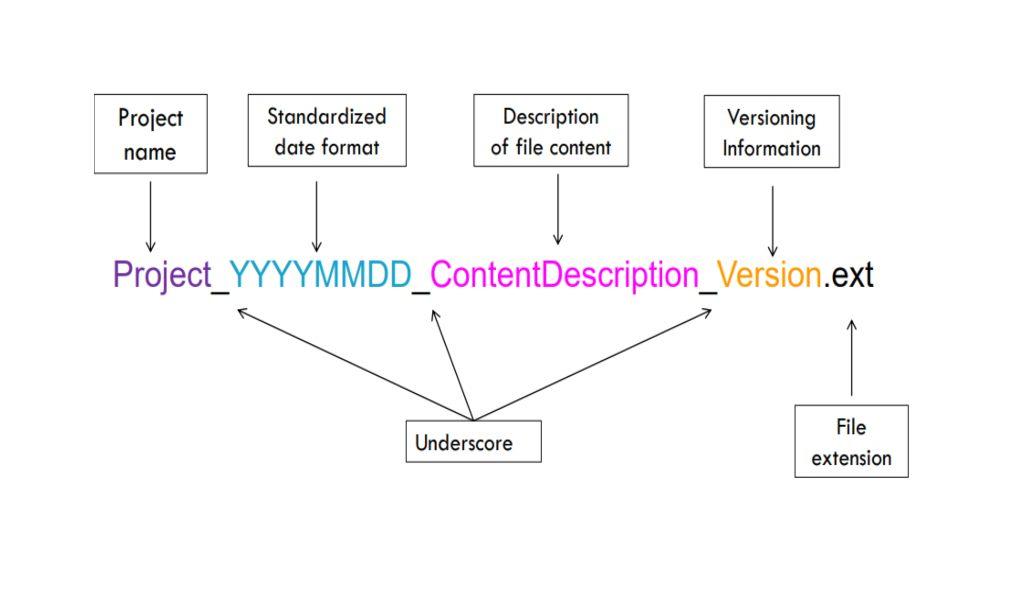- Avoid using spaces, dots and special characters (& or ? or !)
- Use hyphens (-), underscores (_), or capitalization (C) to separate elements in a file name
- Include an abbreviation in the file name to identify
- the instrument used
- the phase (if research constitutes multiple phases)
- the transformation phase (i.e. original, raw, compressed, digitized, recoded, restructured, cleaned)
- the source of third-party data (data provider or principle investigator) (i.e. YinGiordanoAntarcticImagesSTCCensus2016)
- the team (if working with multiple teams)
- the language (if working with multiple languages)
- Include versioning within file names as appropriate
Examples of good file names
- MCIM_Proposal_0.9.doc
- PressHouseUserManual-01.02.doc
File versioning
Versioning is used to ensure you are not working on outdated versions of files (or documents or datasets or records, etc.), particularly in collaborative work.
- Include version information in both the file name, and in the document itself
- Use sequential numbering (i.e. 0.1, 0.2, 0.3 …) for draft until a final version is reached
- Number the final version 1.0. If the final version is revised, number as 1.1, 1.2, 1.3 until a version 2.0 is completed. Continue in this fashion.
- Use versioning software, such as Git; or follow a version control chart (PDF) and create a version control table that details the version number, person responsible for the change, purpose or nature of the change, date of the change
| Version number | Author | Purpose/Change | Date |
|---|---|---|---|
| 0.1 | S.Smith, Post-Doc | Initial draft | 01/01/2016 |
| 0.2 | F.Hill, Post-Doc | Changes to conclusion | 01/07/2016 |
| 0.3 | G.Joe, PI | Changes to introduction | 01/12/2016 |

